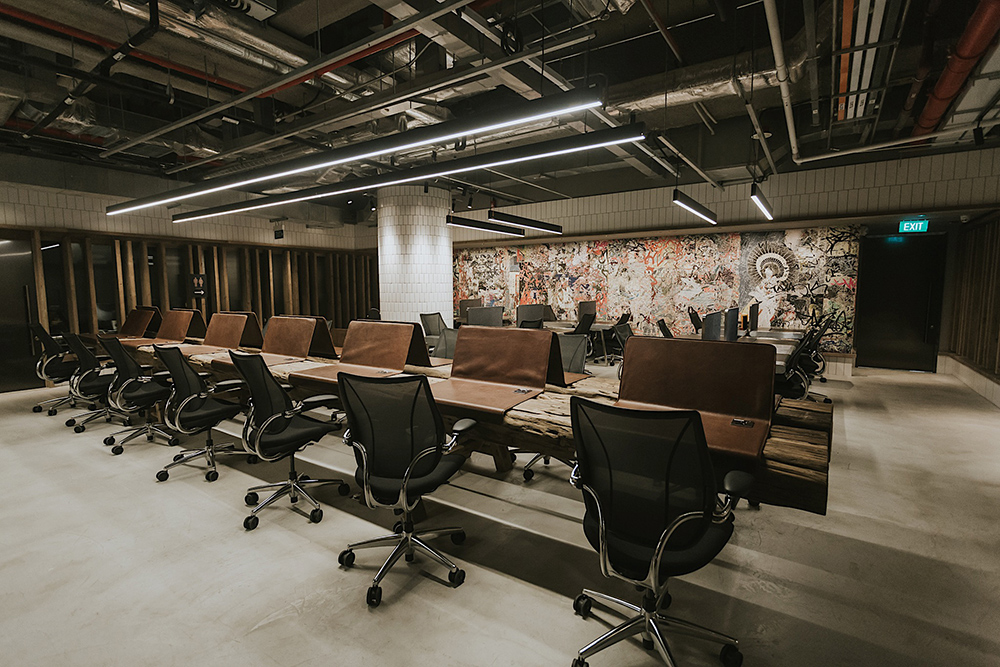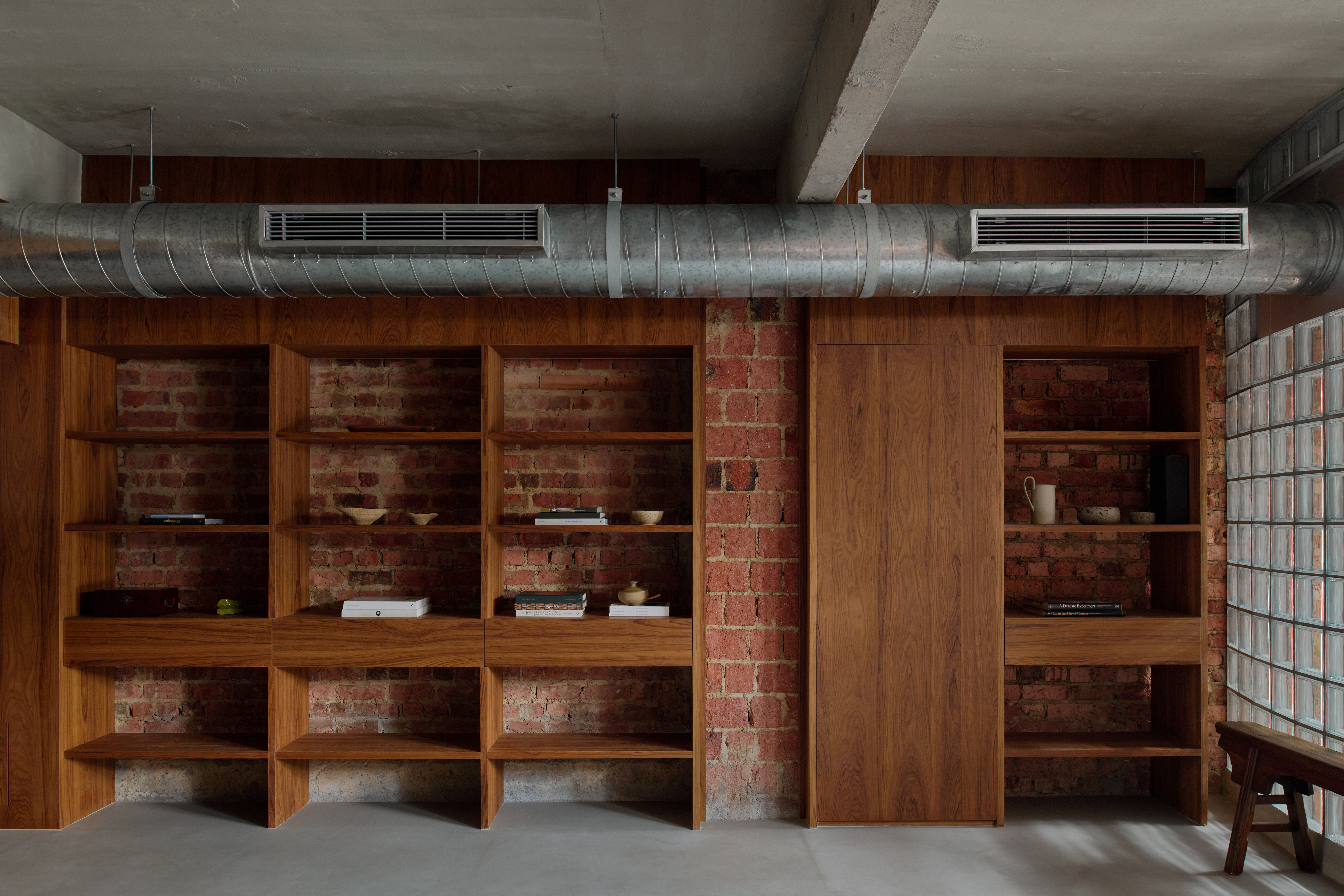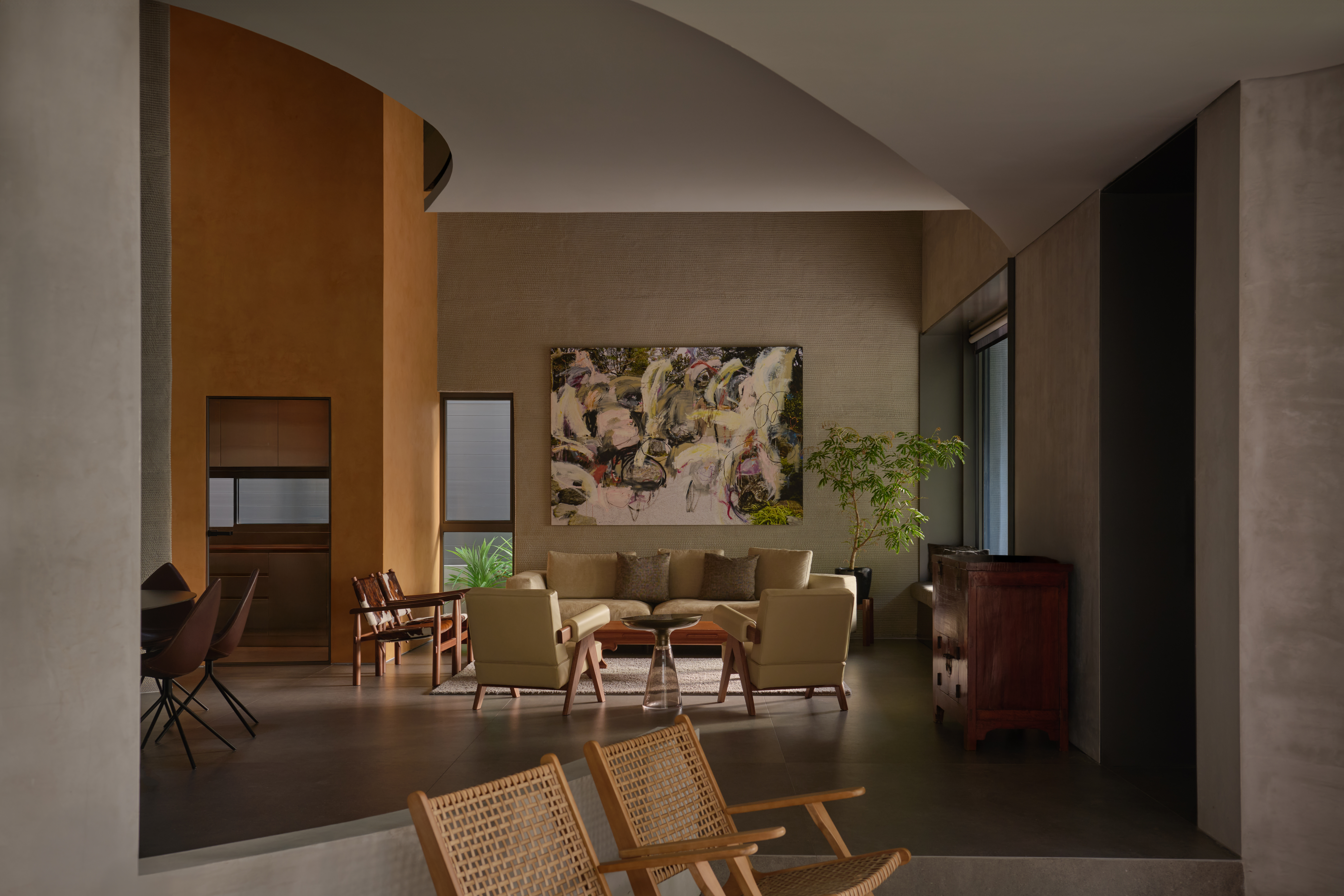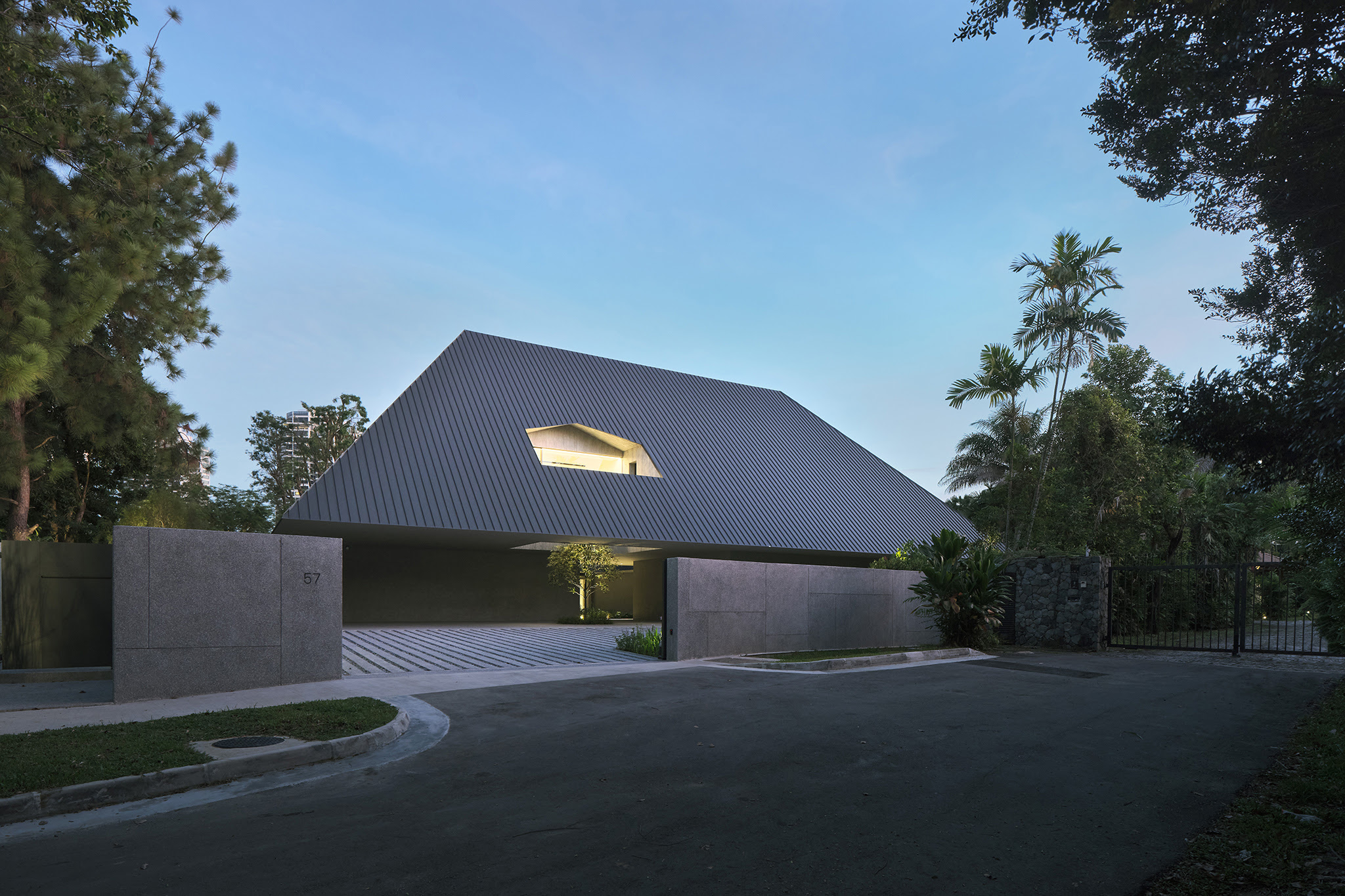
From Amsterdam to Seattle, co-working spaces have become an integral part of the office landscape – a kind of mental, emotional and physical reset in how we approach our work environment. And though the open plan office space – typically represented by endless silos of cubicles under unflattering lighting – is still fairly ubiquitous, the shift, while starting slowly, is gathering steam. Especially in Singapore.
When Saranta Gattie launched The Working Capitol in 2015 on the edge of Chinatown, the move was in response to the then reality that over a third of all workers were already doing flexible and mobile jobs that did not require a permanent desk.

The work hall at The Great Room Centennial Tower
A year later, Jaelle Ang and her partners launched The Great Room in the central business district. Their soigné version – as its co-designer Paul Semple of Hassell put it – is ‘fundamentally a work environment with a hospitality overlay.’
In the year-and-a-half since, other avatars of co-working spaces have come online in Singapore. Both of the recently launched private members clubs, 1880 and The Straits Clan, incorporate capacious rooms devoted to flexible, mobile desk-hoppers. Co-working giant WeWork, meanwhile, launched last December, and it already has two sizeable locations on either side of the Singapore River.

Working stations at Bardo
And the trend does not look like it is petering out any time soon. The Great Room recently opened its second office (again kitted out by Hassell), this time in Centennial Tower, a sparkling skyscraper designed by Pritzker-Prize laureate Kevin Roche with panoramic views of Marina Bay. By May, it will have added a third Singapore outpost on the Orchard Road retail strip, while ratcheting up its regional presence with openings in Bangkok, Jakarta and Hong Kong.
See the finest design-led co-working spaces around the globe
Ang explains the co-working market’s bullishness and rapid expansion in terms of three growth drivers – the proliferation of small firms and business start-ups; a more footloose globalised workforce fueled by technology; and millennials (the largest demographic in the working population) who embrace the sharing and experience economy. Co-working spaces, she believes, will become, if they aren’t already, a critical component of the real-estate strategy of any company, whether as a tenant or as a building owner.
Receive our daily digest of inspiration, escapism and design stories from around the world direct to your inbox.

The Mei Wellness Studio at 1880
Indeed, the financial advantages to co-working are obvious. Aggregated on both a per-employee and per-square -foot basis, sharing common resources (think security, cleaning and IT maintenance) and common amenity spaces (library, meeting rooms, kitchen, printer, nursing room, wellness studio) is demonstrably more cost-effective than setting up an entire office single-handedly.
Adding a growing demand for work mobility and flexibility to these fiscal realities, Ang notes, ‘makes co-working especially appealing to groups trying to stay nimble, such as fast-growing start-ups, global companies with a primarily remote or on-the-go workforce, independent professionals who jet-set, or new divisions of blue-chip MNCs.’
Daven Wu is the Singapore Editor at Wallpaper*. A former corporate lawyer, he has been covering Singapore and the neighbouring South-East Asian region since 1999, writing extensively about architecture, design, and travel for both the magazine and website. He is also the City Editor for the Phaidon Wallpaper* City Guide to Singapore.
-
 At last: a London hotel that’s great for groups and extended stays
At last: a London hotel that’s great for groups and extended staysThe July London Victoria, a new aparthotel concept just steps away from one of the city's busiest rail stations, is perfect for weekends and long-term visits alike
-
 Three new smartwatches showcase new frontiers in affordable timepiece design
Three new smartwatches showcase new frontiers in affordable timepiece designLong may you run: smartwatches from Withit, Kospet and OnePlus favour function and value above all else, demonstrating just how much the smartwatch has evolved in recent years
-
 Debuts, dandies, Demi Moore: 25 fashion moments that defined 2025 in style
Debuts, dandies, Demi Moore: 25 fashion moments that defined 2025 in style2025 was a watershed year in fashion. As selected by the Wallpaper* style team, here are the 25 moments that defined the zeitgeist
-
 A Singapore terraced house is redesigned into owner’s ‘last home’
A Singapore terraced house is redesigned into owner’s ‘last home’‘My last home’ is a Singapore terrace redesign by L Architects, who spruced it up by adding texture, rawness and atmosphere
-
 Inside Singapore's first 3D-printed concrete house
Inside Singapore's first 3D-printed concrete houseThe building presents an elegantly minimalist model for the future of mainstream construction
-
 Experience this Singapore apartment’s Zen-like qualities and cocooning urban haven
Experience this Singapore apartment’s Zen-like qualities and cocooning urban havenWelcome to Singapore apartment The Rasidence, a spacious, Zen-like interior by Right Angle Studio
-
 Wallpaper* Architects’ Directory 2024: meet the practices
Wallpaper* Architects’ Directory 2024: meet the practicesIn the Wallpaper* Architects Directory 2024, our latest guide to exciting, emerging practices from around the world, 20 young studios show off their projects and passion
-
 Changi Airport’s Terminal 2 is a relaxing traveller experience that stimulates the senses
Changi Airport’s Terminal 2 is a relaxing traveller experience that stimulates the sensesChangi Airport’s Terminal 2, designed by Boiffils Architecture, is an organic space inspired by Singapore's vegetation, forming a gateway into its garden city
-
 Ian Chee’s Singapore apartment blends past and present
Ian Chee’s Singapore apartment blends past and presentArchitect Ian Chee welcomes us into his Singapore apartment, where past and present cohabit in perfect equilibrium
-
 Multigenerational homes for family get-togethers
Multigenerational homes for family get-togethersMultigenerational homes make the perfect setting for extended families to come together – in daily life and for special occasions, such as the recent Lunar New Year
-
 Brewin Design Office brings New York nostalgia to Singapore apartment
Brewin Design Office brings New York nostalgia to Singapore apartmentBrewin Design Office brings a touch of New York nostalgia to Singapore’s Nassim neighbourhood for a minimalist apartment interior design renovation